One of the hottest form factors continues to be the 2U systems that either have four nodes or also house accelerators. Gigabyte Server is launching three new density optimized solutions into the market to meet this demand. The new offerings comprise of two 2U 4-node (2U4N) systems and one 2U 2-node offering. Each node supports dual Intel Xeon Scalable processors meaning each U either has two or four Intel Xeon Scalable CPUs. The 2U 2-node system has room for dual-slot GPUs as well.
Gigabyte Server H231-H60 for GPU Compute
The Gigabyte Server H231-H60 eschews a second pair of dual Intel Xeon nodes instead using the space for dual width GPUs.
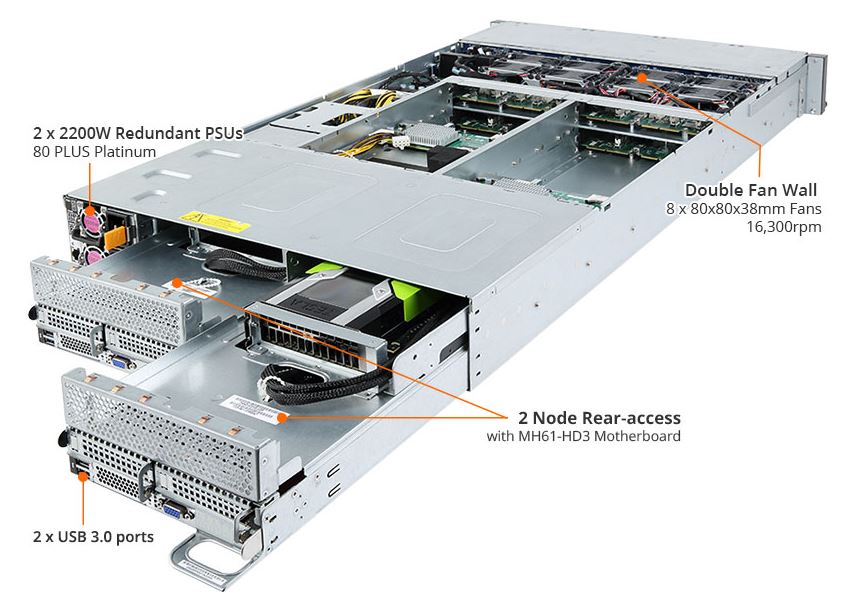
Each dual Intel Xeon Scalable sled also includes expansion with OCP card slots and two low profile PCIe expansion slots. The front of the chassis is a 20x SATA III/ SAS3 + 4x U.2 NVMe design.
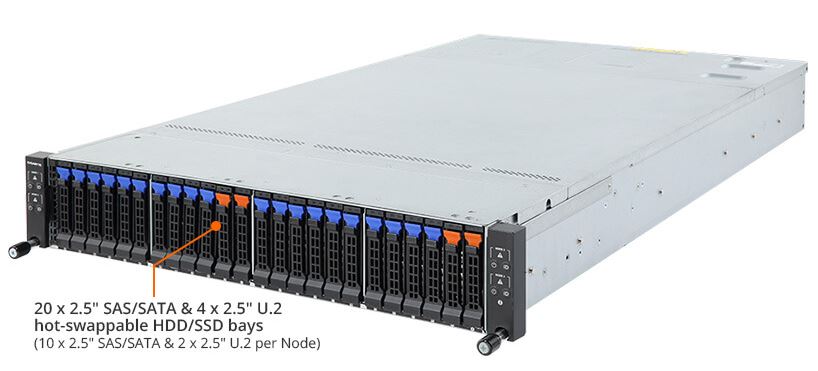
Gigabyte Server H261-H60 and H261-H61
The two similar 2U 4-node systems launched are a cost-optimized version of the platforms we saw from Gigabyte at launch. The biggest difference is removing the 10GbE networking in favor of 1GbE networking. This is popular for larger deployments where the NICs used are very specific and customers want to use a certain NIC instead of an onboard option.
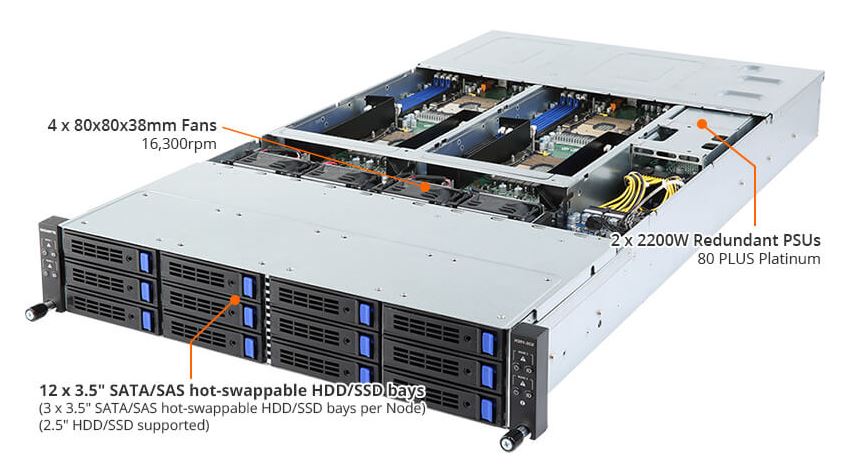
The Gigabyte Server H261-H60 is a 2U4N design gives each Intel Xeon Scalable CPU six DIMMs for 12 per node total and 48 in a chassis. The front is a 12x 3.5″ hot-swap bay configuration which has remained popular given its ability to house large traditional spindle disks or SSDs.The expansion is via either OCP mezzanine cards, primarily for networking, and two PCIe 3.0 low profile slots per node.
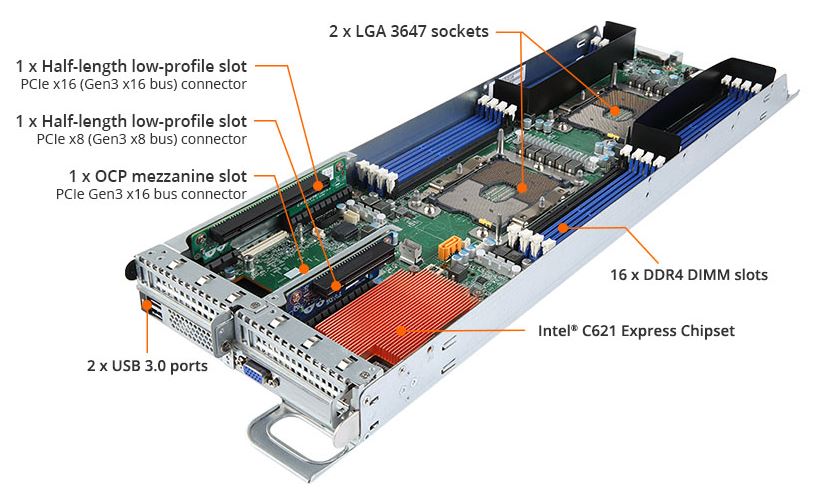
The Gigabyte Server H261-H61 changes the front hot-swap configuration changing the 3.5″ storage for 4x U.2 NVMe drives. NVMe is a hot technology so we can see this being a popular option.
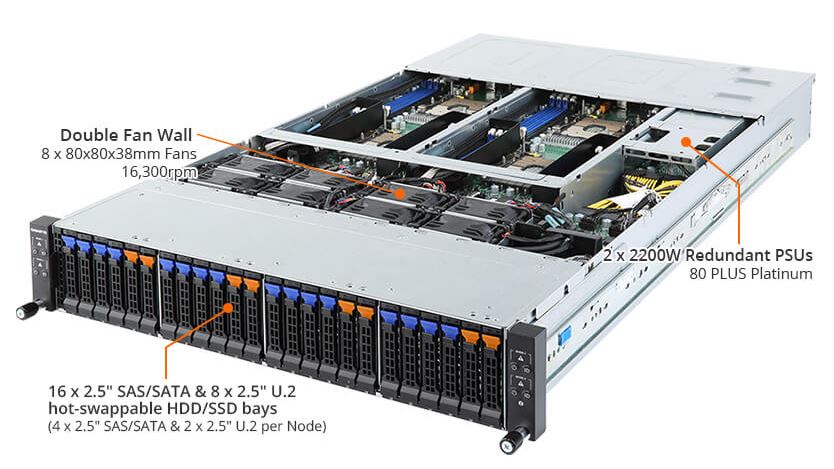
You can read more about these servers at Gigabyte Server’s site.

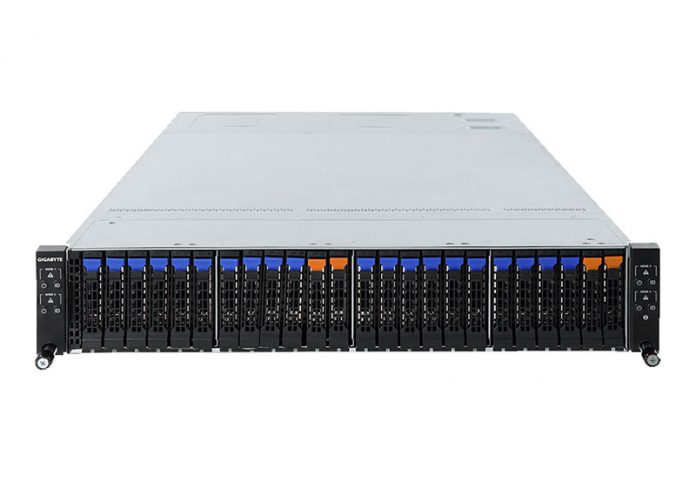



First image shows the drive sleds not aligned properly.
You’d think for their press shots they would at least camouflage poor build quality.